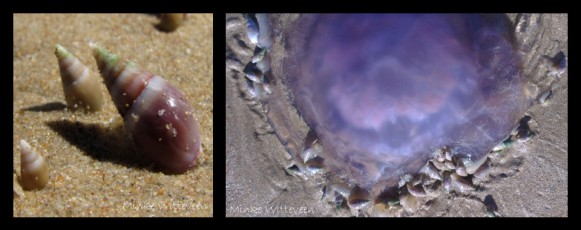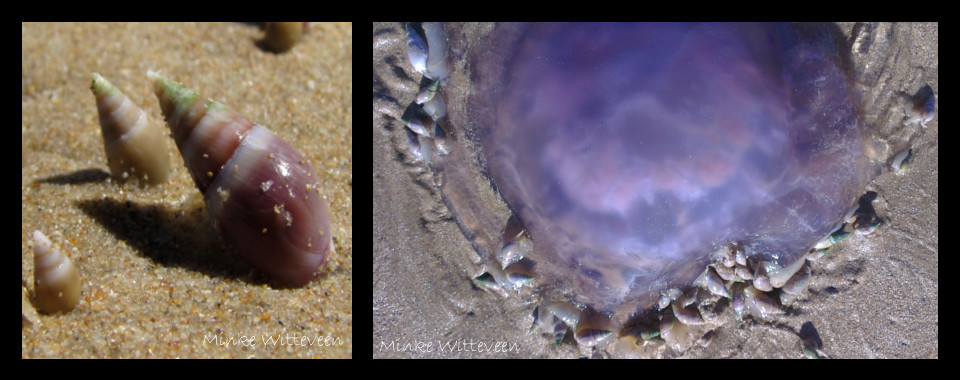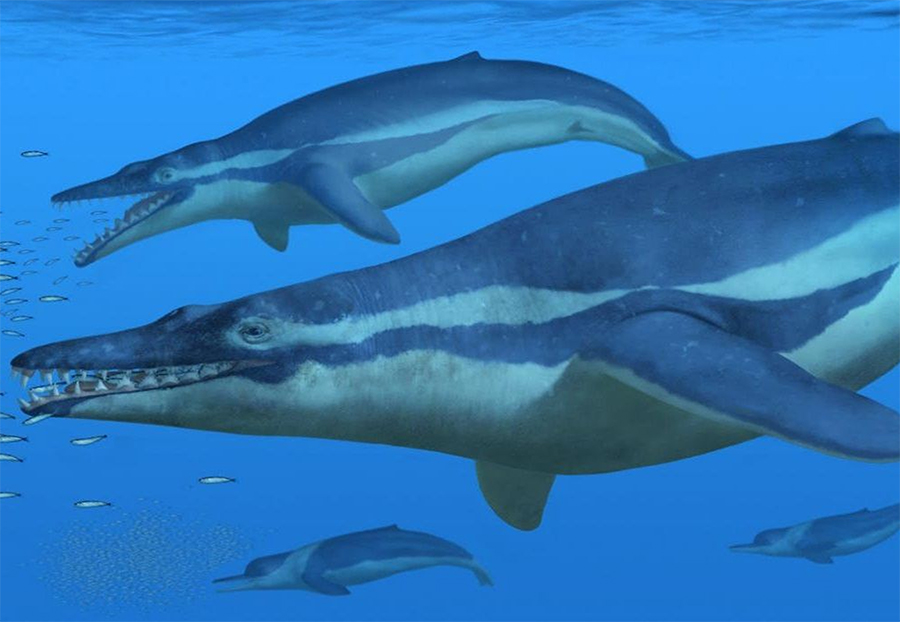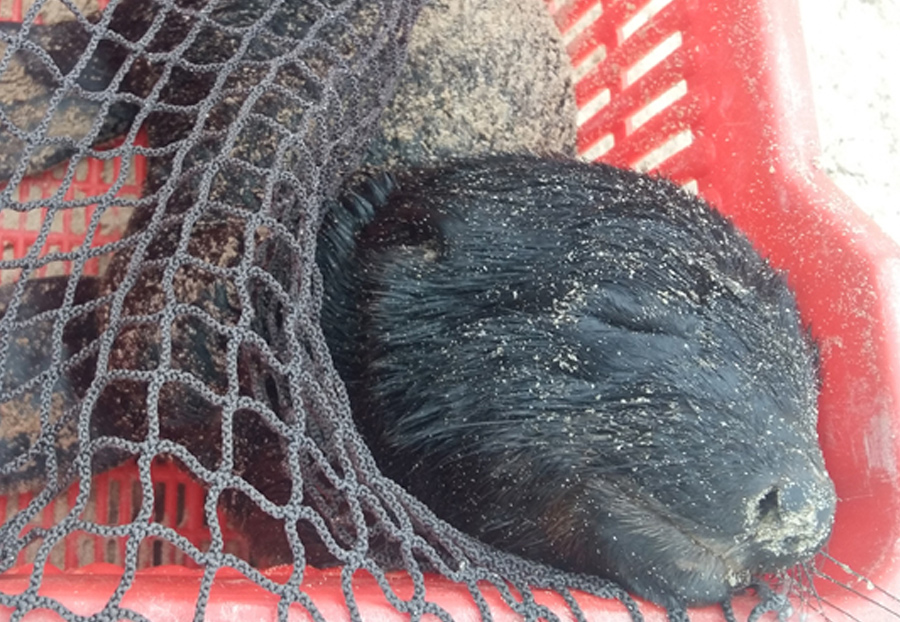Surfing sea snails

The smooth plough shell Bullia rhodostoma is a whelk (sea snail) commonly found along our coastline, often scavenging off washed up jellyfish and blue bottles. This species is extremely slow growing and only reaches a maximum size of 5.5cm. They grow quite rapidly in the first year, reaching 1cm in size, but it takes 10 years to get to 4cm. Whelks of the genus Bullia can be broadly divided into two groups: those that are intertidal (live between the low and high tide marks) and ‘surf’, and those that are subtidal (live below the low tide mark) and do not ‘surf’. The smooth plough shell is an intertidal ‘surfing’ species – but surfing sea snails, that’s new! This species, and others, are able to spread their broad, thin, agile feet and exploit wave action and currents, surfing up and down the shore. The smooth plough shell also has a lighter shell than subtidal species, and a lower center of gravity which assists is successful surfing. However, often the surfing is done with the animal on its back, or side. The smooth plough shell is one of the most efficient surfing species, able to reach a speed three quarters of the water’s flow rate.
Written by: Minke Witteveen
For more reading:
• Branch, G.M., Griffiths, C.L., Branch, M.L. and Beckley, L.E. 2010. Two Oceans: A guide to the marine life of southern Africa. Pp. 198. Random House Struik Publishers, Cape Town.
• Brown, A.C. 1982. The Biology of Sandy-beach Whelks of the Genus Bullia (Nassariidae). In: Barnes, H. (ed) Oceanography and Marine Biology. Aberdeen University Press, Aberdeen.




